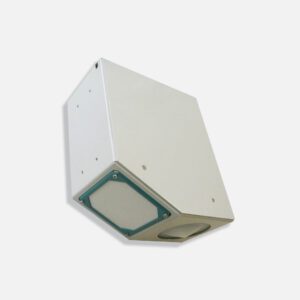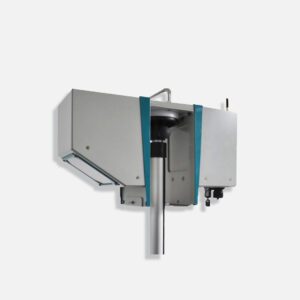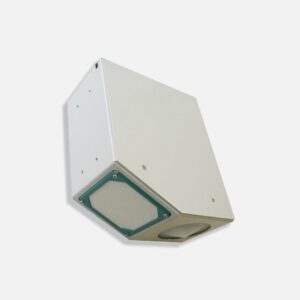Introduction:
Rivers are the lifeblood of our planet, playing a vital role in sustaining ecosystems, and providing water for human consumption, agriculture, and industrial activities. As human populations grow and anthropogenic pressures increase, the need for effective river monitoring becomes paramount. This blog delves into the importance of river monitoring, the technologies involved, and the positive impact it can have on environmental sustainability.
The Need for River Monitoring:
Ecosystem Health: Rivers support diverse ecosystems, hosting a wide range of flora and fauna. Monitoring river health helps identify changes in water quality, habitat degradation, and the impact on aquatic life. It allows for early intervention to protect biodiversity.
Water Quality Assurance: With increasing pollution from industrial, agricultural, and urban sources, ensuring water quality is essential. River monitoring helps detect contaminants, nutrients, and pathogens, safeguarding both human and environmental health.
Flood Prediction and Management: Monitoring river flow and water levels aids in predicting and managing floods. Early warning systems can be established to mitigate the impact on communities, infrastructure, and agriculture.
Resource Management: Rivers are a crucial water source for agriculture and industries. Monitoring helps in optimizing water usage, preventing over-extraction, and promoting sustainable resource management practices.
Technologies for River Monitoring:
Satellite Imaging: Satellite technology provides a bird’s-eye view of river systems, enabling the monitoring of large-scale changes, such as deforestation, land-use changes, and pollution discharges.
Sensor Networks: Ground-based sensor networks collect real-time data on water quality, temperature, flow rates, and more. These sensors can be strategically placed along riverbanks and tributaries to provide a comprehensive understanding of the river ecosystem.
Remote Sensing: Remote sensing technologies, including drones and unmanned aerial vehicles (UAVs), offer high-resolution images and data. These tools can monitor hard-to-reach areas and provide detailed information on river conditions.
Data Analytics and Modeling: Advanced data analytics and modeling techniques process the vast amount of data collected. This helps identify patterns, predict future changes, and make informed decisions for sustainable river management.
Benefits of Comprehensive River Monitoring:
Early Detection of Pollution: Rapid identification of pollutant sources allows for timely intervention, preventing further contamination and protecting both ecosystems and human populations.
Adaptive Management: Real-time data enables adaptive management strategies, allowing authorities to respond promptly to changing environmental conditions, such as extreme weather events or human-induced stressors.
Community Engagement: Involving local communities in river monitoring fosters environmental awareness and a sense of responsibility. Citizen science initiatives can contribute valuable data and create a collaborative approach to river conservation.
Policy Formulation: Data-driven insights support the formulation of effective environmental policies. Governments and organizations can develop regulations based on scientific evidence to ensure the sustainable use and protection of river ecosystems.
Case Studies:
- The Ganga River, India: s::can, in collaboration with Aaxis Nano Technologies, has been entrusted by the Central Pollution Control Board (CPCB) to implement a real-time water quality monitoring network along the Ganges. This initiative is part of the Hydrology Project, which is financially supported by the World Bank. The implementation of the water quality monitoring network equips the CPCB with valuable insights essential for undertaking preemptive measures to control the release of untreated industrial effluents into the river. By doing so, this project significantly enhances the health and safety of millions of individuals who rely on the Ganges for various purposes.
- The Narmada River, India: Following the ways to rejuvenate the Ganga River, the Madhya Pradesh Pollution Control Board (MPPCB) has entrusted Aaxis Nano Technologies to install Real-Time Water Quality Monitoring Systems (RTWQMS) at ten different locations of the Rivers in Madhya Pradesh to monitor the water quality and level of pollutants in real-time.
| S.No. | LOCATIONS OF RTWQMS |
| 1 | River Narmada at Barman Ghat (Main Ghat), Narsighpur |
| 2 | River Narmada at Nemawar (Near the Water supply station) |
| 3 | River Narmada at Hanumantiya (Indira Sagar reservoir), Khandwa |
| 4 | River Narmada at Maheshwar, Khargone |
| 5 | River Narmada at Rajghat, Badwani |
| 6 | River Betwa at Mahuaghat (Near Water supply station), Bina |
| 7 | River Betwa at road bridge, Orchha, Tikamgarh |
| 8 | River Tapti at Nawatha Pumping Station, Nepanagar |
| 9 | River Mandakini at Ramghat, Chitrakoot |
| 10 | River Mandakini at Janki Kund, Chitrakoot |
3. The Krishna & Cauvery River, India: Aaxis Nano Technologies, has been entrusted by the Karnataka State Pollution Control Board (KSPCB) to install Real-Time Water Quality Monitoring Systems (RTWQMS) at Krishna and Cauvery River in Tamil Nadu to monitor the water quality and level of pollutants in real-time. Cauvery water is used as the drinking water for over 625 villages and six major towns including Mysuru and Bengaluru. Krishna is another major river of the state. It is considered the lifeline of the North Karnataka region.
4. The Periyar River, India: Aaxis Nano Technologies has been commissioned by the Kerala State Pollution Control Board to implement a real-time monitoring system for water quality and discoloration tracking in the Periyar River. This initiative aims to promptly identify instances of pollution, enabling immediate remedial actions to be taken.
5. The Bhawani River, India: Aaxis Nano Technologies has been given the responsibility by the Tamil Nadu Pollution Control Board to deploy Real-Time Water Quality Monitoring Systems (RTWQMS) along the Bhavani River. This installation aims to continuously monitor water quality and assess pollutant levels in real time.
Challenges and Future Outlook:
- Data Standardization: Achieving global consistency in data collection methods and standards is a challenge. Standardizing river monitoring practices can enhance data comparability and improve global river management.
- Integration of Technologies: Integrating diverse technologies into a cohesive monitoring system requires coordination among various stakeholders. Governments, research institutions, and technology developers need to collaborate for a holistic approach.
- Climate Change Impact: Climate change poses a significant threat to river ecosystems. Monitoring efforts must adapt to changing conditions and incorporate climate change data to formulate resilient management strategies.
Conclusion:
Comprehensive river monitoring is pivotal for safeguarding our ecosystems, ensuring water quality, and promoting sustainable development. As technology advances, integrating satellite imaging, sensor networks, and data analytics will empower us to make informed decisions, fostering a harmonious relationship between human activities and the invaluable rivers that sustain life on Earth. Through international collaboration and a commitment to environmental stewardship, we can create a future where rivers thrive, providing for both present and future generations.









